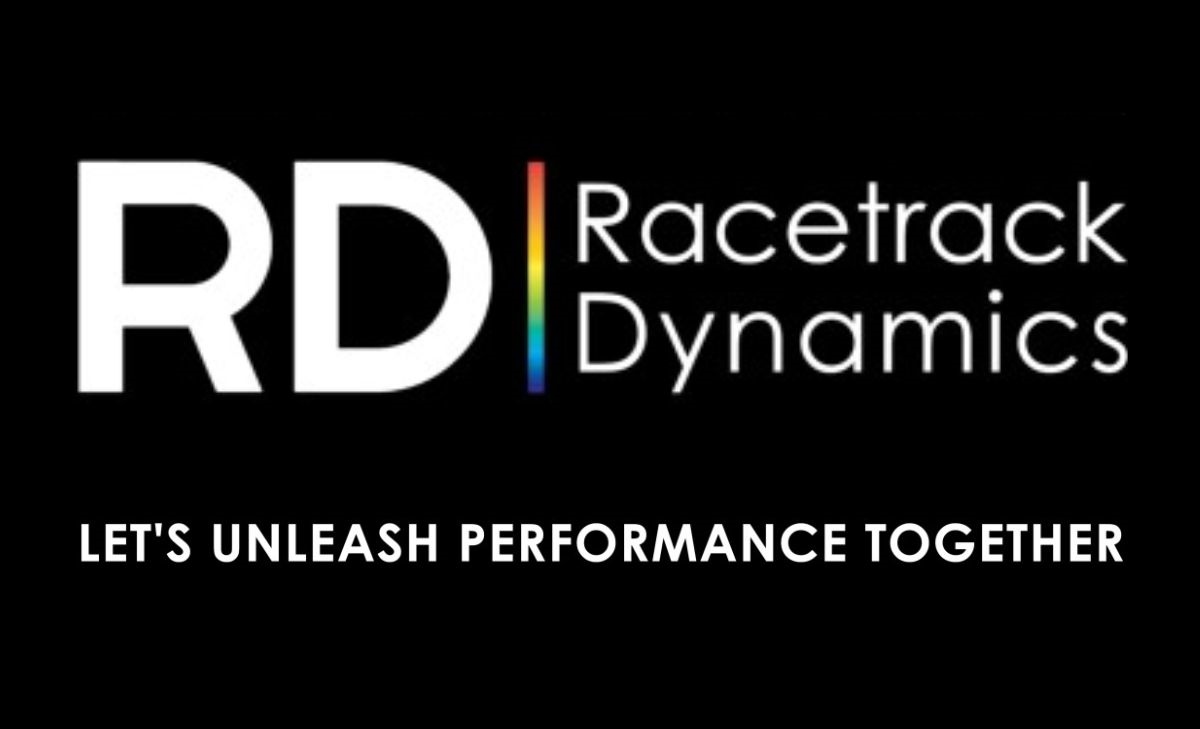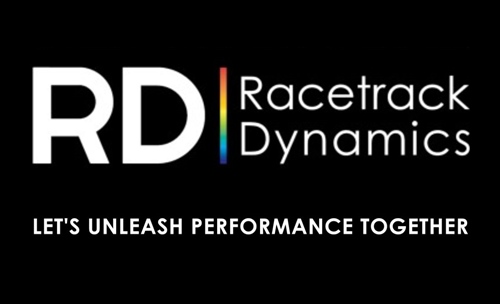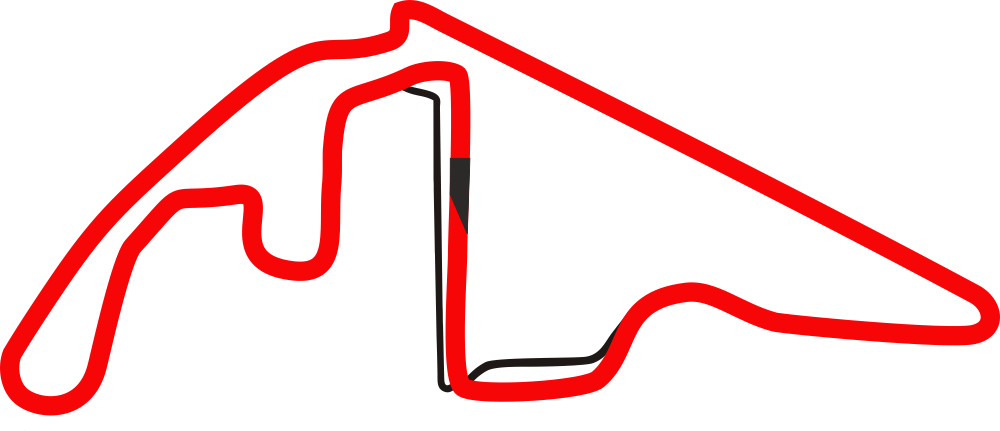Alex Burg and Javier Bermejo are the co-founders of the Racetrack Dynamics project, a training course that aims to introduce aspiring engineers to the world of Formula 1.
Thanks to their professional experience, the two mechanical engineers aim to help as many people as possible achieve a difficult but not impossible goal: working in the pinnacle of motorsport.
The FormulaWebMagazine.com staff had the pleasure and honour of interviewing them to find out all the details of their initiative.
FP: "Hello, Alex and Javier. It's an absolute pleasure to have you here with us. Let's start by getting an overall picture about Racetrack Dynamics, shall we?"
AB: "Hi Fabrizio. So, Racetrack Dynamics it started, started with Javier always receiving lots of interest on LinkedIn, people wanting to get into Formula One, people asking for advice, people wanting to effectively have his job, asking him 'how do I do this? How, how can I get where you are? Can I go to the factory and see you one day?' That happens a lot more than you would think, actually.
"That led to him designing this, our main course, the 'Complete Guide to Vehicle Dynamics in F1', which basically condenses his almost 10 years of experience into one single 12-hour course to teach people about vehicle dynamics and what he's learned in Formula One. So this happened throughout the last year.
"Towards the start of this year, we were both talking about how to scale this and how to effectively make it bigger, make it go public, make it skyrocket. And that's how we sort of divided the work into two sections of how Javier is doing the technical expertise, doing all of the teaching and the training side of things and I do more of the managing relations, managing the company or trying to scale it, managing social media stuff.
"So I have more of a management and directing position, and I tend to be a bit better at public speaking and communicating. So I tend to do a lot more of that".
JB: "I don't think I can add much more to that. Basically, Alex is obviously taking care of the things that he's naturally better at than me, like communication or social media, and I support him with the vehicle dynamics content. That's my strong point".
FP: "Great stuff. So, I wanted to ask you what the short-term, medium-term and long-term objectives are for Racetrack Dynamics".
AB: "I think Racetrack Dynamics is headed to be like the world's leading training provider of vehicle dynamics, content and training. We've had an amazing start and our demographic is mostly university students, but we've had anything from high school to actual professionals working in Ferrari and Red Bull as well.
"The reception has been amazing. The feedback we get is amazing. I think all that we need is to keep doing this and let more people know who we are and that we exist.
"I think that, just leaving the product itself to the side, there's only a handful of people in the world that work or have worked in Formula One and there are no Formula One engineers teaching vehicle dynamics besides us. That is what makes it special, and that is why we aim and we are on track to be leaders in providing this kind of training, because we have both the knowledge and the skills of 'how do you design suspensions?' There is nobody in the world doing what we do.
"So I can't tell you if this is going to happen in six months or five years or ten years, I can't give you a time horizon for that, but we are on a path to effectively being the leaders of this. We are the only ones doing it".
JB: "I mean, to compliment what Alex is saying, I prepared the content myself, all the technical content. I had a deep motivation when I did it. It was really to simplify the process that I went through.
"I simply couldn't believe that it was so difficult, that I had to navigate so many books and digest so many equations and try to put them all together and really get the picture of how everything work. So I thought 'there needs to be an easier way for new people into the industry to understand how everything works. I'm sure I can simplify that'.
"I've done all the hard work, I've really found so many papers, I'm sure I can make this easier and more digestible for students to get as much as they can by putting so little, less effort into it. They will become more time efficient. They will discover more quickly what they like and what they don't. And there's guys that love it.
"The motivation for me was what gave me the energy to come home, after long hours in the factory, working race weekends, coming home and putting all the content together was... I was just thinking of my former self, 16 years old or 18 years old me fighting all these rules. It only takes a little bit of more of effort to put everything down in something that is digestible and easier for students, but still technically accurate and correct. It's just another step more.
"I can make so many other people's so many people's lives easier by doing this. I think this is the strength of the course, and the content the students get is good. What I'm especially proud of is I think we do a very good job, an extremely good job at simplifying it. We don't expect people to come up with, you know, super advanced knowledge on maths and physics. We will walk you through, I will tell you everything you need to know.
"If you don't know what is a fast Fourier transform is or what is this spectrogram or what is this thing that you did, this concept that you need to understand... I'm going to teach you, I will give you the keys that you need to understand. I will keep it simple. If you want the maths behind it, it will be there. You will always be able to consult the material. It will be rigorous, but it's essentially making the process simple for people that are starting in the field and they just don't want to be overwhelmed.
"As Alex was saying, I think the product is really good. It's really good. We are very, very heavily invested into the project, because the feedback has been amazing and we just need to get people to discover it".
FP: "You're basically revolutionising the whole 'I want to get into Formula One as an engineer' idea".
JB: "Exactly. There's so many people talking about 'how to get into F1' and they don't work in F1, they're just professional people. That bothers me. How can people talk about things that they don't know? I mean, it really bothers me. It bothers me because they are inducing, I mean, they are leading people to believe false stuff. They are 'teaching' things that are wrong. And I believe that's very wrong. That's very bad".
FP: "So, going back to Racetrack Dynamics, can you run us through the sections that you have in your course? How is the course structured?"
AB: "Yeah, of course. Let me just bring up the list of topics. So effectively, the course is designed to be accessible to anyone. We don't assume prior knowledge, besides a bit of math and physics, your standard high school math, physics, forces, moments, bit of vectors.
"We've had the high school people, and when you start doing more difficult maths, the actual operations that you do is mostly just adding and multiplying.
"The difficulty in the course, the difficulty of vehicle dynamics is in understanding the concepts and how those concepts link to each other, and how they affect vehicle performance, and how they are intertwined with each other and how increasing spring stiffness here makes one thing better, but makes something else worse. The mathematics and the physics of it is actually quite simple. It's just moments and forces.
"The course builds vehicle dynamics knowledge from the ground up. Starting with the tyres, it explains tyre performance, the different parameters that you can play with to maximise the performance of your tyres, then it goes into lateral dynamics, which is effectively how your car behaves on a turn and what are the different things you can do to affect it, and how you can measure different parameters of it, and analyse where the limits are, and how having a different balance of forces in the front and the rear, how different axles perform at different rates.
"It also covers weight transfer, which is quite an important one, not to confuse it with mass transfer, which a lot of people get wrong. Weight transfer is, when you're in a turn, how turns are linked to each other, how different loads affect different tyres as you go around.
"Then there's a chapter on performance and simulation, where we go into exactly how performance is extracted in Formula 1, the simulation tools that are used.
"We effectively give you the tools to go out and find out exactly what it is that you can do. We tell you 'you can go look at the software, you can do this type of simulation, you can do a bicycle model, you can do a dynamical vehicle model'.
"It would be impossible to teach both a complete vehicle dynamics foundation and an entire piece of software in just 12 hours, but we do give you everything you need to know about vehicle dynamics so you can confidently move forward with simulation.
"We finish off putting all of that together, get the orchestra fully running to designing a suspension. So we go into a different concept of suspension design and how the angle of the different wishbones and how kingpin and caster can affect your vehicle performance and how you would go about simulating these and putting them together to design a full working suspension.
"In addition, if a student now somewhere wants to get in touch with an F1 engineer and ask questions and whatever, their best chance as of now is to blind message on LinkedIn and hope that someone replies, whilst we throw that in for free with the course.
"You can just chat to us. You can just ask us anything, whether it's about the course or whether it's about help or whatever with aspirations. We just throw it in for free because it really complements it. And it's something that 99% of people don't have access to.
"You can't talk to an F1 engineer. You Fabrizio can as a journalist, but an engineering student can't talk to an F1 engineer. That's what I was saying".
JB: "On top of that, the students get the slides forever. There are like 140 slides. They are very careful and well prepared.
"I think everybody sees the system when I show it to them. The clarity, the graphics, the way everything is easier to follow, I'm sure.
"They also get 10 minutes one-to-one time with any of us to discuss their aspirations or their technical ambitions or projects that they want to develop.
"All the questions that they would not like to ask in front of a crowd, that they want this privacy to be able to chat one-to-one, they can use this time as they want. They can talk to me about the master they want to study, about how they switch from this background to that other one or about what drives them or 'I have this technical problem designing this, can you help me to sort it?' It's our time fully available to them".
FP: "How much would that mean for you to have someone one day saying 'thank you guys. I got into Formula One because of your course'. I mean that would be quite outstanding, wouldn't it?"
AB: "I'd say it's probably the ultimate form of accomplishment and the ultimate form of proudness and achievement. Making it to Formula One yourself is already incredibly difficult and exclusive, it's something that most people will never do. Helping someone else, that is not you, do that is an even better reward.
"It's a lot harder to show someone else and I think it would just fill ourselves with joy and pride. There is no bigger achievement".
JB: "Actually, about that, we also provide one-to-one consultations for people to prepare their interviews. We know the industry. We know what the F1 teams need. We know pretty much what is inside what is required for the job and our mission is also to help them accomplish that.
"Once the fundamentals are covered and they understand the physics and how the car works, then I will help you to put it all together and actually land that job.
"So we would be of course very happy if our students can do that. There is no bigger reward or privilege than seeing someone that has trusted in us accomplish it, through the technical expertise that they win with us and through our support. This is the pinnacle of the project of what we're doing".
FP: "What if someone becomes better than you and beats you on track? How would you take it?"
AB: "Well, if their car goes past me on the road, that car is faster than mine, I'm going to say 'of course it is, I designed it. I basically formed the guy who designed the car'.
"I mean, if one of our students makes it to Formula One, for starters that is amazing. But if they are better than us, that's even better. We would love to see that. We would love to see that".
FP: "Thank you so much guys, having this chat was absolutely amazing. Good luck with Racetrack Dynamics!"
AB and JB: "Thank you, Fabrizio".
Main cover photo www.linkedin.com



